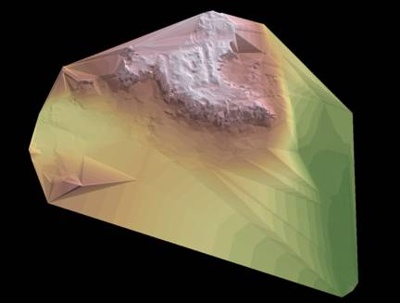The investigations that have previously been conducted at the Bala Hisar have all been relatively limited and have typically focussed on clarifying the chronological sequence of occupation. The recent work of the Peshawar-Bradford team has been critical for substantially revising the chronology outlined by Wheeler and re-appraising the origins of urbanisation in this region. However, the excavations focussed primarily on the earliest occupation levels, and this means that we lack a clear understanding of the occupation preserved in the upper parts of the mound.
Dittman's reanalysis of Wheeler's sequence reiterated that these upper deposits were likely to include Achaemenid, Mauryan, Indo-Greek, Indo-Scythian, Indo-Parthian and Kushan period remains, as well as deposits that date to an as yet unknown phase of the later 1st millennium AD. These are some of the most significant periods of South Asian political history, and the presence of this range of cultural deposits at the site indicates that it is critical for understanding Post-Harappan urbanism, secondary state-formation, the impact of Achaemenid imperial control, Alexander studies, and the impact of a series of major South and Central Asian empires.
In October 2006, a preliminary investigation of the site was carried out by a small team of archaeologists from the University of Peshawar and the University of Cambridge. Unfortunately only a limited amount of work was possible.
During the initial reconnaissance, Mr Donald Horne and Mr Muhammad Naeem began a topographic surface survey of the Bala Hisar and associated mounds. It was only feasible to carry out six days of detailed topographic survey at the site. As a result, it was not possible to completely survey either the main Bala Hisar mound or the lower eastern mound. Nonetheless, it was clear from the work that was completed that the mound is in many ways still preserved as it was in 1958, when Wheeler first commenced his excavations.
The areas of the site that have most obviously been affected by erosion since Wheeler's time are the parts of the site where Wheeler conducted excavations. This is most notable in Ch. I where the deep sounding was excavated. Here, erosion has caused a massive loss of archaeological deposit on both sided of the trench, and this part of the site is no longer recognisable from the photos published in 1962. In addition, parts of the northern and southern ends of the site are being affected by encroachment from the surrounding fields and the local village. However, all in all, the site is in a reasonably good state, no doubt thanks to its protected status.
The initial surface walking and the topographic survey both showed that there was an area on the north east face of the main mound that appeared not to have been damaged by significant erosion or encroachment, and this was chosen as the location for the first seasons test excavations. It was decided to open a small 2 x 2 m trench at the top of a steep slope. Only five days of excavation were possible, but almost immediately, good quality archaeological deposits were encountered.
The evidence for occupation exposed included deposits such as mud brick and mud lump architectural remains, a fireplace, occupation surfaces and pits of several different periods. These deposits were characterised by an abundance of cultural material that has good relative parallels to assemblages that date to the 1st millennium AD. This suggests that this part of the site is likely to have intact archaeological deposits dating to the later phases of the site's occupation.

Copyright © M. Nasim Khan and Cameron Petrie, 2007







